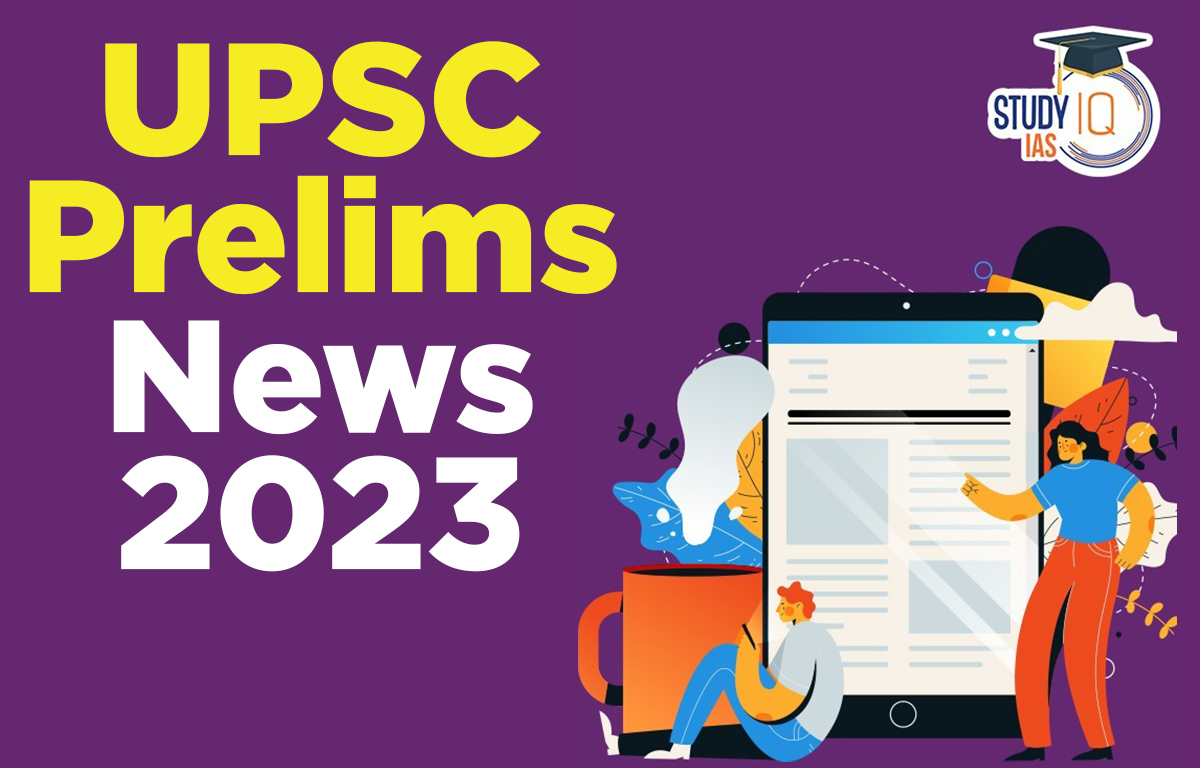Table of Contents
UPSC Prelims News of 22 February 2023
Exercise Malabar
Context: Australia will host the Malabar multilateral naval exercise for the first time this year.
About Malabar
- Malabar Exercise started off in 1992 as a bilateral naval exercise between Indian and US navies.
- In 2015, Japan joined and in 2020, the Australian Navy joined the Malabar Exercise, making it a quadrilateral naval exercise.
- It takes place annually in the Indian Ocean and Pacific Oceans alternatively.
- Activities: This exercise includes a diverse range of activities such as fighter combat operations and maritime interdiction operations.
- Aim: The aim of the Malabar Exercise is to coordinate for a free, open, and inclusive Indo-Pacific.
Other Joint Maritime Exercises of India
- IBSAMAR: It is a maritime exercise held by India, South Africa, and Brazil.
- SIMBEX: India and Singapore.
- SLINEX: India and Sri Lanka.
Algal Bloom and Eutrophication
Context: Marine scientists have warned of the increasing frequency and intensity of the harmful algal blooms (HAB) posing the threat of food-borne diseases among fish consumers.
About Eutrophication:
- Eutrophication is the process in which a water body becomes overly enriched with nutrients like nitrates and phosphates, leading to the plentiful growth of simple plant life.
- The excessive growth (or bloom) of algae and plankton in a water body is an indicator of this process.
- Effects: Eutrophication is considered to be a serious environmental concern since it often results in the deterioration of water quality and the depletion of dissolved oxygen in water bodies.
- Eutrophic waters can eventually become “dead zones” that are incapable of supporting life.
- Classification: On the basis of their nutrient content, lakes are categorized as Oligotrophic (very low nutrients), Mesotrophic (moderate nutrients), and Eutrophic (highly nutrient-rich).
Cultural Eutrophication
- Nutrient enrichment of lakes at an accelerated rate is caused by human activities and the consequent ageing phenomenon is known as cultural eutrophication.
Algal Bloom
- Phytoplankton (algae and blue-green bacteria) thrive on the excess nutrients and their population explosion covers almost the entire surface layer. This condition is known as algal bloom.
- Effects: Algal blooms increase the biochemical oxygen demand (BOD) as they produce toxins causing anoxic conditions and death of the lakes.
- Most algal blooms are not harmful, but some produce toxins. These are known as Harmful Algal Blooms (HABs).
Uroosi Feature
Context: A Mughal-era architectural feature called Uroosi is one of Kashmir’s answers to the seismic threat it faces.
About Uroosi Architecture
- Uroosi are wooden shutters used as partition walls within homes, instead of concrete walls.
- Uroosi is believed to be a Persian term meaning ‘hidden bride’.
- It includes octagonal and decagonal ornamental pillars too.
- Uroosi is one such, where wooden shutters could be rolled up to make one room or rolled down from hanging grooves in ceiling chambers, to partition the space into separate areas.
- Jalali House is a landmark in Srinagar that has this architectural element.
- Salient features: It has the ability to absorb seismic shocks and withstand them.
Odisha’s Measures against Child Marriage
Context: Odisha state has been taking stern stand against Child Marriage, by bringing about social and behavioural change over the past years.
About Child Marriage and measures against it
- According to UNICEF, Child Marriage is defined as a marriage of a girl or boy before the age of 18 and refers to both formal marriages and informal unions.
- Legally in India, a marriage in which either the girl is below 18 years of age, or the boy is below 21 years of age is child marriage.
- To tackle this social issue, Odisha has come up with the following multi-pronged strategy:
- All districts track the absence of girls in schools and villages, reporting these numbers to the district administration.
- The inspectors in-charge of the police stations were assigned the job of conducting monthly meetings in the community to discuss dropping out from school and child marriages with representatives of the panchayat, parents, and children.
- ‘Advika – Every Girl is Unique’ a platform has been created to link all schemes targeting girls, from 10 to 19 years.
- State has come up with guidelines to declare villages child-marriage-free.
- Police stations were made child friendly so that girls would feel empowered to approach the police.
- Such initiatives have resulted in Odisha recording an overall decline in the prevalence of child marriage: from 21.3% in NFHS-4 to 20.5% in NFHS-5.
Menstrual Leave
Context: Spain has become the first European country to introduce paid menstrual or period leaves.
About the Spain’s law on menstrual leaves
- According to the law, women in the country can take paid leave during their periods.
- Usually, employees in the country need to submit a medical certificate to take three days long leave. This condition is being relaxed.
The need for menstrual or period leaves
- Health and Well-being: Menstrual or period leaves are important because they allow women to take care of their health and well-being during menstruation.
- Work productivity: Menstrual pain can significantly affect a person’s ability to work by making it difficult to concentrate and perform tasks. Period leaves allow individuals to take time off work or school for menstrual pain without risking their job or academic performance.
- Addressing stigma: Menstrual or period leaves can help combat menstrual stigma and create a supportive workplace environment for women who may feel embarrassed or ashamed to discuss their menstrual needs with their employers.
In which countries have period leaves been introduced?
- Law on menstrual or period leaves exists in very few countries in the world such as Zambia, Indonesia, and Japan.
Menstrual Leave in India
- Indian Parliament is yet to take the subject. No bills have been introduced yet at the central level.
- In India, very few states like Kerala have passed the law.
- However, some private companies like BYJUS, ZOMATO, ARC, MAGZTER, GOZOOP, etc. are offering menstrual leave.
Autism
Context: A study has found that gut micro-biome composition have implications in several diseases, including autism.
About Autism
- ‘Autism spectrum disorder’ (ASD) is the term used to describe a group of neuro-developmental disorders.
- Cause: Researchers are yet to fully understand the factors that cause ASD. However, they believe that genetic condition could have a prominent role.
- Symptoms: Affected children show impaired social interactions, lack verbal and nonverbal communication skills, and display restricted and repetitive behaviours.
- They adversely affect one’s cognitive abilities and, diminish one’s quality of life.
- Effects: People suffering from ASD may have difficulties developing and maintaining friendships, communicating with peers, or understanding common behaviors expected.
- Vulnerability: Children having a sibling with ASD, certain genetic or chromosomal conditions, such as fragile X syndrome or tuberous sclerosis, experienced complications at birth, born to older parents.
- Treatment: Current treatments for ASD aim to reduce symptoms that interfere with daily functioning and quality of life. Treatment plans usually involve multiple professionals and are catered to the individuals.
Whale Stranding
Context: Recently, 14 pilot whales were found stranded near the shore of Kalpitiya, a town located on Sri Lanka’s west coast.
What is whale stranding and why does it happen?
- Whale stranding is a phenomenon where whales beach themselves on shore, becoming stuck and unable to return to the water.
- Other aquatic animals like dolphins and porpoises are also known to beach.
- Most of the stranding events involve single animals but sometimes, mass strandings, consisting of hundreds of marine animals at a time, can happen.
- Causes of whale stranding: The reasons for mass strandings are several, including the topography of the region, illness, human activities and increasing noise pollution in the oceans.
- Hotspots of whale stranding: Among the major hotspots for the beaching of aquatic animals are Tasmania, New Zealand‘s Golden Bay and Massachusetts’s Cape Cod in the United States.
- These areas witness several instances of stranding possibly because the deep water here quickly becomes shallow due to tidal variations.
How might Human Activities be causing Whale Strandings?
- Noise pollution: Noise pollution can disorient whales and disrupt their communication and navigation, leading to beach strandings.
- Global warming: Rising temperatures of the oceans cause changes in prey and predator distribution, resulting in whales coming closer to shore.
New START Treaty
Context: Recently, Russian President Vladimir Putin announced that Russia is suspending its participation in the New START.
About START (Strategic Arms Reduction Treaty)
- START-I, which was signed between the US and the erstwhile USSR in 1991, and came into force in 1994.
- START-I capped the numbers of nuclear warheads and intercontinental ballistic missiles (ICBMs) that each side could deploy at 6,000 and 1,600 respectively.
- It was lapsed in 2009, and was replaced first by the Strategic Offensive Reductions Treaty (SORT, also known as the Treaty of Moscow).
- SORT was later replaced by the New START treaty.
About New START Treaty
- It is a treaty between the United States of America and the Russian Federation for the Further Reduction and Limitation of Strategic Offensive Arms.
- It entered into force on February 5, 2011, and placed new verifiable limits on intercontinental-range nuclear weapons.
- It is the only remaining nuclear arms control treaty between the two countries.
- Limits under New START Treaty
- 700 deployed intercontinental ballistic missiles (ICBMs), deployed submarine-launched ballistic missiles (SLBMs), and deployed heavy bombers equipped for nuclear armaments;
- 1,550 nuclear warheads on deployed ICBMs, deployed SLBMs, and deployed heavy bombers equipped for nuclear armaments (each such heavy bomber is counted as one warhead toward this limit);
- 800 deployed and non-deployed ICBM launchers, SLBM launchers, and heavy bombers equipped for nuclear armaments.
- Compliance with the treaty: Since the New START Treaty’s entry into force, as of February 1, 2023, the two parties have conducted on-site inspections, held meetings of the Bilateral Consultative Commission, and held biannual data exchanges on strategic offensive arms subject to the treaty.
ICAR Wheat
Context: Recently, Union Agriculture Ministry announced that it had set up a committee to monitor the situation arising from the increase in temperatures and its impact on the current wheat crop.
Background
- Cereal Inflation soared to a record 16.12 per cent year-on-year in January 2023 – driven primarily by wheat and atta (flour), whose consumer prices registered an annual increase of 25.05 per cent.
- Reduce wheat stocks in government godowns: These, at 154.44 lakh tonnes on February 1, were the lowest in six years for the same date.
- In 2022, a spike in March temperatures, lead to a significant drop in wheat output as well as government wheat procurement.
- Climate change has made India’s wheat crop vulnerable to terminal heat stress during the final grain formation and filling stages.
- This time (2023), with both maximum and minimum temperatures already 3-5 degrees Celsius above normal in many wheat-growing areas.
About Wheat
- Wheat is a typically a 140-145 days crop planted mostly in November – before the middle of the month in Punjab, Haryana, Rajasthan and Madhya Pradesh (post the harvesting of paddy, cotton and soyabean) and the second half and beyond in Uttar Pradesh and Bihar (after sugarcane and paddy).
- If sowing can be preponed and taken up from around October 20, the crop isn’t exposed to terminal heat, with much of the grain-filling being completed by around the third week of March.
- It can be comfortably harvested by the march end.
Government Efforts to Overcome Wheat Crisis
- ICAR scientists breed new climate-smart varieties, amenable to early sowing and escaping the impact of March temperature spikes.
- Indian Agricultural Research Institute (IARI) scientists have developed three varieties to fight climate change and preponed harvesting period of wheat crop:
- HDCSW-18
- HD-3410
- HD-3385


 UPSC Prelims News 20 March 2023
UPSC Prelims News 20 March 2023
 UPSC Prelims News 17 March 2023
UPSC Prelims News 17 March 2023





















